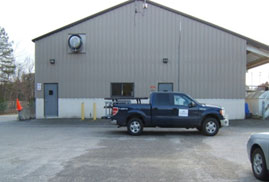Remedial Action Operations and Long Term Monitoring
Former Brunswick Naval Air Station
Brunswick, Maine
Watermark was awarded a Remedial Action Operations (RAO) and Long Term Monitoring (LTM) contract with Naval Facilities Engineering Command (NAVFAC) Mid-Atlantic. Watermark conducted the Operations & Maintenance of the groundwater extraction and treatment system (GWETS) and performed LTM at the Former Naval Air Station (NAS) Brunswick, Maine. Since 2011, the GWETS treated a large dissolved phase chlorinated volatile organic plume, which covered approximately 61 acres in what is known as the Eastern Plume. Semi-annual LTM and reporting are conducted at 6 sites encompassing over 100 wells.
Watermark conducted the Operations & Maintenance of the groundwater extraction and treatment system (GWETS) and performed LTM at the Former Naval Air Station (NAS) Brunswick, Maine. Since 2011, the GWETS treated a large dissolved phase chlorinated volatile organic plume, which covered approximately 61 acres in what is known as the Eastern Plume. Semi-annual LTM and reporting are conducted at 6 sites encompassing over 100 wells.
Watermark’s initial effort was to review and prepare addendums to the Quality Assurance Project Plan, the Site Safety and Health Plan and the Operations and Maintenance Plan.
In an effort to improve the operation of the Former NAS Brunswick GWETS, Watermark considered plant operation parameters and extraction well flow under various conditions even though the existing GWETS extraction well network was protective of human health and the environment. Using groundwater capture zone analysis, three pumping alternatives and configurations were examined to assess optimal hydraulic containment effectiveness. A revised pumping plan was implemented. Watermark reviewed GWETS monitoring data to evaluate the overall system performance and identify potential optimization strategies. Based on the assessment, Watermark proposed to remove the air stripper from the treatment train because the required discharge criteria could be achieved without the air stripper. The elimination of the air stripper and associated equipment reduced costs by approximately 60%, which resulted in a significant savings for the Navy.
Operation, Routine Maintenance and Monitoring: The Eastern Plume GWETS consisted of 6 extraction wells and associated underground piping network, a treatment building, and an infiltration gallery. With a maximum capacity of 120 gpm, the treatment train consisted of sand filters and granular activated carbon for vapor and liquid phases. The GWETS is currently operating at approximately 40 gallons per minute using 6 extraction wells. Watermark has maintained the plant at 95% operational uptime since 2011 and disposed of the resulting effluent to the on-site infiltration gallery.
